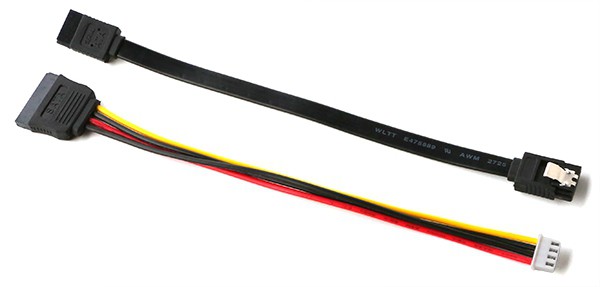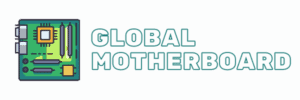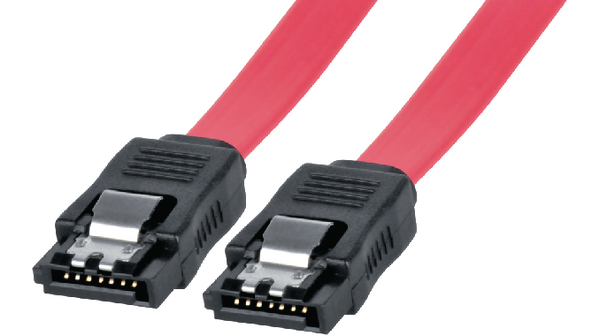What is SATA (Serial ATA)?
Serial ATA can be thought of as the evolution of the parallel ATA physical storage interface in desktop computers, some servers, and network attached storage devices.
With its material quality, it allows the use of thinner, more flexible cables and less needle numbers. This enables computer manufacturers to design their systems with cables that are easy to direct and install.
However, it also enables easier, more flexible motherboard routing than the Parallel ATA technology currently used.
What are difference between the SATA I, SATA II and the SATA III?
SATA I (revision 1.x) interface, officially known as SATA 1.5Gb / s , is the first generation SATA interface to run at 1.5Gb / s . The volume of bandwidth supported by the interface reaches up to 150MB/s.
SATA II (revision 2.x) interface, formally known as SATA 3Gb / s , is the second generation SATA interface running at 3.0 Gb / s. The volume of bandwidth supported by the interface reaches upto300MB/s.
SATA III (revision 3.x) interface, officially known as SATA 6Gb / s , is the third generation SATA interface running at 6.0 Gb / s. The volume of bandwidth supported by the interface reaches up to 600MB/s. This interface is compatible with SATA 3Gb / s interface.
SATA II features are compatible with SATA I ports. SATA III features are compatible with SATA I and SATA II ports. However, the maximum speed of the drive will be lower due to the lowest speed limit of the port.
What are the differences between SATA and ATA?
Serial ATA disk technology offers 150MB per second transfer rate. It works 1.5 times more efficient and performance than ATA100 drives.
The 7200rpm rotational speed, 8 MB buffer memory, and the use of a disc in a single cable (peer to peer) make the drive run faster.
The use of thin data and power cables facilitates in-case cabling and cooling. Hot plug feature allows you to change your data disk even while the system is running.
In the early 2000s, Advanced Host Controller Interface (AHCI) emerged as a new interface option and started using a new form of connection called Serial ATA (SATA). SATA provided many advantages over PATA.
The need for a 40-pin connection cable has disappeared, a smaller cable and connector has been used. In this way, the connection cables inside the computer cases have been simplified, cable tracking has become easier and the airflow has become better.
PATA has a controller that can transfer 100-133 mb data in 1 second and a 80 pin cable, while SATA has a structure that can transfer 150mb / sec (in theory, the cable carrying capacity is fiber optic, so it is 1.5gb). SATA-II can go up to 300mb / sec.
Do Motherboards Come With Sata Cables

Usually they do yes. It is nearly always included in the packaging to have two or more such cables, along with a cluster of needed power cables and shafts.
If trend it varies by manufacturer as well as model, but I’ve yet to see any motherboard which doesn’t at least include one cable.
It may also be included in the HDD/ SSD drive( s) you buy, sometimes even with the power supply unit or the example.
During the past 2 to 3 decades I’ve been tinkering with my own machines, I’ve accumulated hordes of additional cables of all sorts – just because each component tended to come with ancillaries like these, and I’ve got numerous reproductions I never used.
Anyway, these cables are rather cheap. At least in comparison to the actual factors themselves. So if you do need more than accommodated, it’s likely not an extreme expense to buy a container of cables from some computer shop.
Sometimes SATA cables come with a motherboard. Usually, two SATA cables come with a certain motherboard as people have one CD Drive along with one HDD Drive. But one can also add one SATA power cable to a specific pin connector.
Here one thing can be noticed that it is only accessible to the number of drives in one’s computer and also how many SATA power cables
are usable in the PSU. SATA inference has pins for data all along the underside of the connector. It comes with an L shape so it can only be plugged in one way to correspond with the cable.
The original SATA connectors don’t have fastens to secure them. There are three major categories of SATA cables. One is a standard two linkage.
Another one is a standard three acquaintance and the other one is an eSATA cable. All of them are used for motherboards.
Basically, a make of either two standards or three standard cables comes with the motherboard itself. SATA cables majorly connect various inventions with a computer which can be a storage device, hard disc, and so on.
Many brand-new PSUs occur with multiple SATA power connectors. It is likely to be separate or on one cable.
SATA cables are compelled to set up a good and useful acquaintance. And as SATA cable accompanieds with connecting the drive with the motherboard, so it’s mandatory for the

